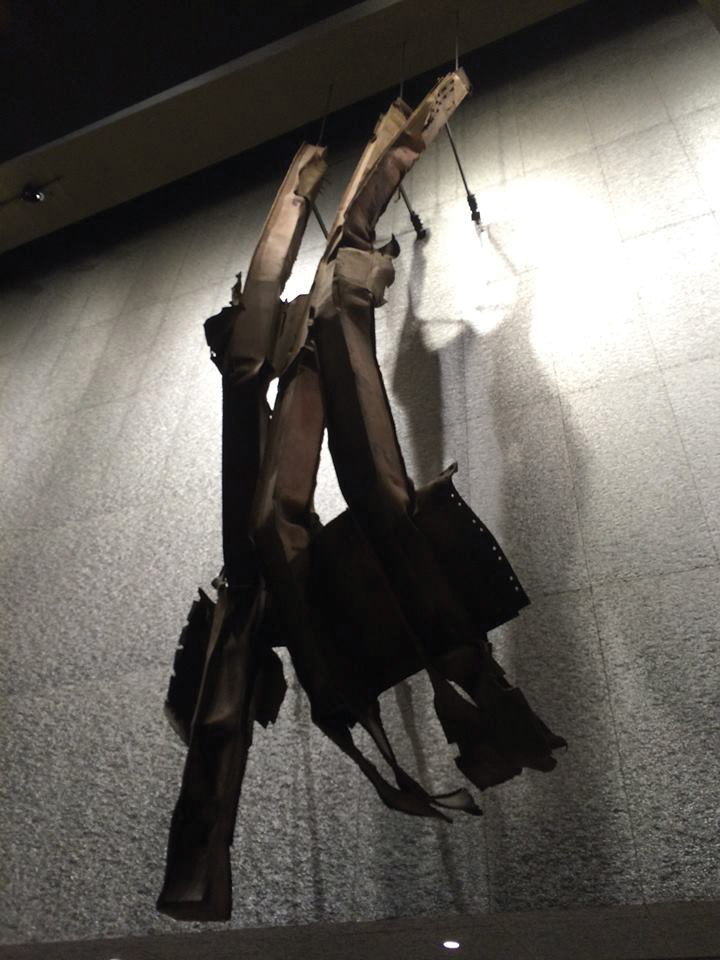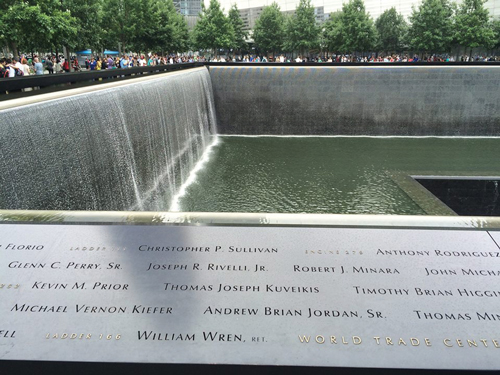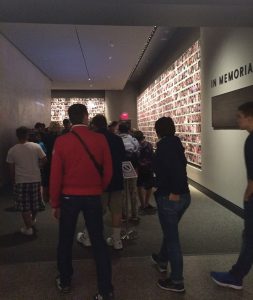Coping with Grief in the Face of Evil

 On a recent vacation to New York, Brian’s two worlds collided (he never stops thinking about Cambodia!). He met with Cambodian officials, went to the UN, and also visited “Ground Zero” for the first time. Walking into the 9/11 Memorial Museum, he was struck by a sense of familiarity. As a Canadian observer – an “outsider” as you will, to the events that have devastated so many Americans, he shares his personal reflections on a visit that became emotional and meaningful to him:
On a recent vacation to New York, Brian’s two worlds collided (he never stops thinking about Cambodia!). He met with Cambodian officials, went to the UN, and also visited “Ground Zero” for the first time. Walking into the 9/11 Memorial Museum, he was struck by a sense of familiarity. As a Canadian observer – an “outsider” as you will, to the events that have devastated so many Americans, he shares his personal reflections on a visit that became emotional and meaningful to him:
Today was a sobering day as we visited “Ground Zero” and the 9/11 Memorial Museum. It was strange to be there, remembering the events of that terrible day. I first heard about it on my colleague’s car radio as we drove into work at the RCMP headquarters. As if frozen in time, I remember so clearly that we were on Marine Drive turning north onto Cambie when the news referenced an aircraft hitting the World Trade Center. I remember wondering how anybody could be that stupid to drive their Cessna into such a huge structure… how little I knew. The rest of the day was spent in horror watching the torment unfold.
Today, standing among the artifacts and massive, preserved remnants of buildings torn apart was poignant but unemotional for me. It was all too big to grasp, too huge to comprehend… until I walked into a room where the photos of the 2,753 victims were on the walls. I’d been in these types of rooms before in Phnom Penh’s genocide memorial! It was personal and the impact on individual lives profound.
 I found myself mulling over the differences between the killing locations from the genocide in Cambodia versus 9/11 in New York. There is a quiet dignity given to those grieving in New York. Funding and resources have allowed this city to truly transform the World Trade Center location into a deeply respectful place. The understanding of the value of human life and the gravity of its loss is clearly present – a gift, I believe, given to this nation by its heritage of Christianity. This is contrasted by Cambodians, who do their best with few resources and even less understanding of the tragedy inflicted upon them.
I found myself mulling over the differences between the killing locations from the genocide in Cambodia versus 9/11 in New York. There is a quiet dignity given to those grieving in New York. Funding and resources have allowed this city to truly transform the World Trade Center location into a deeply respectful place. The understanding of the value of human life and the gravity of its loss is clearly present – a gift, I believe, given to this nation by its heritage of Christianity. This is contrasted by Cambodians, who do their best with few resources and even less understanding of the tragedy inflicted upon them.
Many years ago in Cambodia, I rescued a bunch of pre-execution interrogation photographs from being burned by men cleaning up one of the locations used for torture and killing. Perhaps these photos were the only record of lives lived and loved ones lost – how precious they are. But the photos had little or no meaning in a nation focused on day-to-day survival. This was contrasted today by the fact that we can’t even take photos of the walls of victims at the 9/11 museum – so appropriately reverenced are the images of those who went to work that day and never returned.
It is estimated that the number of New Yorkers suffering from post-traumatic stress disorder (PTSD) as a result of the horrific events of 9/11 is 422,000. That caused me to wonder… the Khmer Rouge slowly, meticulously and brutally isolated, tortured and starved the entire population of Cambodia over the course of the Killing Fields revolution. It lasted 1330 days (excluding the civil wars before and after this period), killing 2 million people under horrific circumstances. That is an average of about 1500 lives lost every single day for three years and eight months from a national population of 7.5 million. The equivalent per capita in the US would have been 68.8 million lives lost with no resources, doctors, treatment, counseling, social services or even supportive families. The plight of Cambodia as seen in such comparisons starts to come into focus.
But there is something more subtle – deeper. The US population (and much of the West) has been graced with a pride and dignity. The ability, if you will, to grasp its value. America’s robust national self esteem, while frequently mocked by those in other countries, is the glue which holds a nation together on days like 9/11 and it is vital in recovery. Cambodia has had such confidence shattered, and recovery (psychologically and otherwise) is extremely difficult. How does Cambodia possibly cope with its history? How can it move forward in the face of massive untreated PTSD? Yet they do so slowly – somehow. The US on the other hand has bounced back. Their understanding of the value of human life and the dignity afforded to the memory of victims is presented in New York with both beauty and humanity, to their credit.
My visit to the World Trade Center location has given me a new appreciation for the tragedy of 9/11, the dignity of the lives lost there and this nation’s ability to grieve and honour its dead. At the same time, I am once again called to patience, sympathy and prayer for the people of Cambodia.
